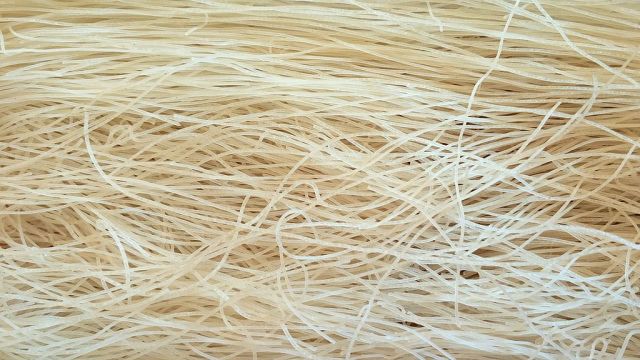Rice noodles, or simply rice noodle, are noodles made from rice. The principal ingredients are rice flour and water. Sometimes ingredients such as tapioca or corn starch are added in order to improve the transparency or increase the gelatinous and chewy texture of the noodles.
Rice noodles are most common in the cuisines of East and Southeast Asia, and are available fresh, frozen, or dried, in various shapes, thicknesses and textures. However, fresh noodles are highly perishable; their shelf life may be just several days. The shelf life may be extended by drying and removing its moisture content. Studies of drying rice noodles were conducted by the International Food Research Journal.
In Tamil Nadu and parts of Kerala, Sri Lanka, Laos, Singapore, and Malaysia, a type of rice noodle known as idiyappam is usually made fresh at home and tends to be tender with a distinctive texture. A variation of idiappam, known as sevai in Tamil Nadu, is used as the base in savoury preparations; it is also called santhakai in the Coimbatore region of Tamil Nadu. A similar preparation, shyavige, is popular in Karnataka.
Pasta made from brown rice flour is also available (in health food stores in Western nations) as an alternative to wheat flour-based noodles for individuals who are allergic to wheat or gluten.
The origin of rice noodles dates back to China during the Qin dynasty when people from northern China invaded the south. Due to climatic conditions, the northern Chinese have traditionally preferred wheat and millet which grew in cold weather while the southern Chinese preferred rice which grew in hot weather.

